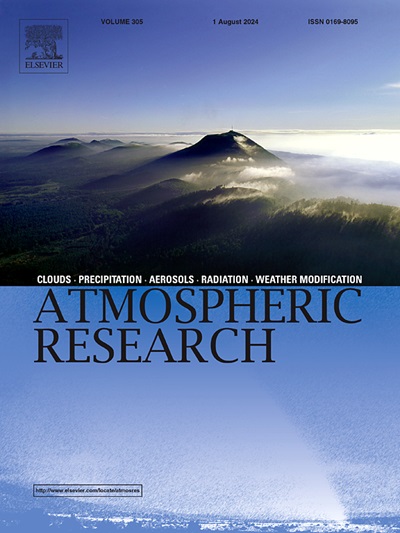Observational climatology and interannual variability of the spring rainy season onset over southern China: Objective definition and influence from tropical Pacific Ocean
IF 4.5
2区 地球科学
Q1 METEOROLOGY & ATMOSPHERIC SCIENCES
引用次数: 0
Abstract
Based on multiple datasets, the spring rainy season onset (RSO) date over southern China is objectively determined and validated, and the relationship between RSO and tropical Pacific SST is then explored. The RSO date is defined as the time when the cumulative precipitation departure over southern China reaches its minimum value, with a climatological onset date of March 14 and a standard deviation of 22 days. The RSO is closely linked to the sudden changes in atmospheric circulations and abrupt emergence of rainfall and convection, displaying strong interannual variability. An early RSO is characterized by an increase in rainfall during February and March, and is associated with a zonal sea surface temperature (SST) dipole in the tropical Pacific. This is because the concurrent cooler SST in the tropical Western Pacific triggers lower-tropospheric southwesterly wind anomalies over the western North Pacific through Matsuno-Gill-type Rossby wave response. These wind anomalies then enhance water vapor transport and warm advection towards southern China, which, in turn, fosters anomalous upward motion combined with vorticity advection. Such anomalous ascending motion is favorable for the increased precipitation and the advanced RSO over southern China.
求助全文
约1分钟内获得全文
求助全文
来源期刊

Atmospheric Research
地学-气象与大气科学
CiteScore
9.40
自引率
10.90%
发文量
460
审稿时长
47 days
期刊介绍:
The journal publishes scientific papers (research papers, review articles, letters and notes) dealing with the part of the atmosphere where meteorological events occur. Attention is given to all processes extending from the earth surface to the tropopause, but special emphasis continues to be devoted to the physics of clouds, mesoscale meteorology and air pollution, i.e. atmospheric aerosols; microphysical processes; cloud dynamics and thermodynamics; numerical simulation, climatology, climate change and weather modification.
 求助内容:
求助内容: 应助结果提醒方式:
应助结果提醒方式:


